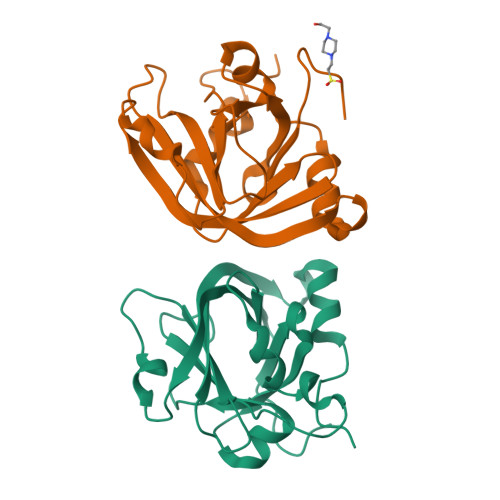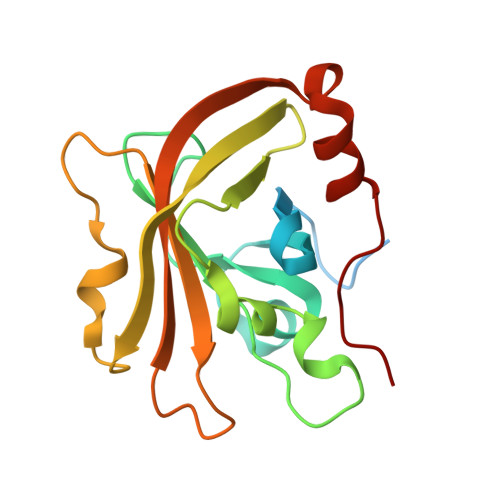Crystal Structure of Streptococcus pyogenes Sortase A: Implications for Sortase mechanism
Race, P.R., Bentley, M.L., Melvin, J.A., Crow, A., Hughes, R.K., Smith, W.D., Sessions, R.B., Kehoe, M.A., McCafferty, D.G., Banfield, M.J.(2009) J Biological Chem 284: 6924-6933
- PubMed: 19129180
- DOI: https://doi.org/10.1074/jbc.M805406200
- Primary Citation of Related Structures:
3FN5, 3FN6, 3FN7 - PubMed Abstract:
Sortases are a family of Gram-positive bacterial transpeptidases that anchor secreted proteins to bacterial cell surfaces. These include many proteins that play critical roles in the virulence of Gram-positive bacterial pathogens such that sortases are attractive targets for development of novel antimicrobial agents. All Gram-positive pathogens express a "housekeeping" sortase that recognizes the majority of secreted proteins containing an LPXTG wall-sorting motif and covalently attaches these to bacterial cell wall peptidoglycan. Many Gram-positive pathogens also express additional sortases that link a small number of proteins, often with variant wall-sorting motifs, to either other surface proteins or peptidoglycan. To better understand the mechanisms of catalysis and substrate recognition by the housekeeping sortase produced by the important human pathogen Streptococcus pyogenes, the crystal structure of this protein has been solved and its transpeptidase activity established in vitro. The structure reveals a novel arrangement of key catalytic residues in the active site of a sortase, the first that is consistent with kinetic analysis. The structure also provides a complete description of residue positions surrounding the active site, overcoming the limitation of localized disorder in previous structures of sortase A-type proteins. Modification of the active site Cys through oxidation to its sulfenic acid form or by an alkylating reagent supports a role for a reactive thiol/thiolate in the catalytic mechanism. These new insights into sortase structure and function could have important consequences for inhibitor design.
Organizational Affiliation:
Institute for Cell and Molecular Biosciences, Newcastle University, Framlington Place, Newcastle upon Tyne NE2 4HH, United Kingdom.




















